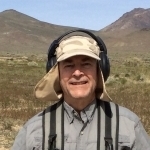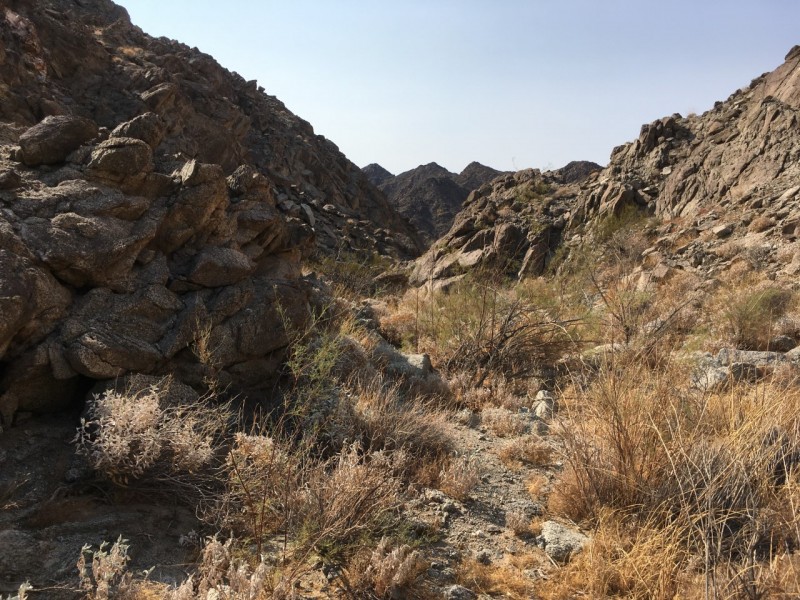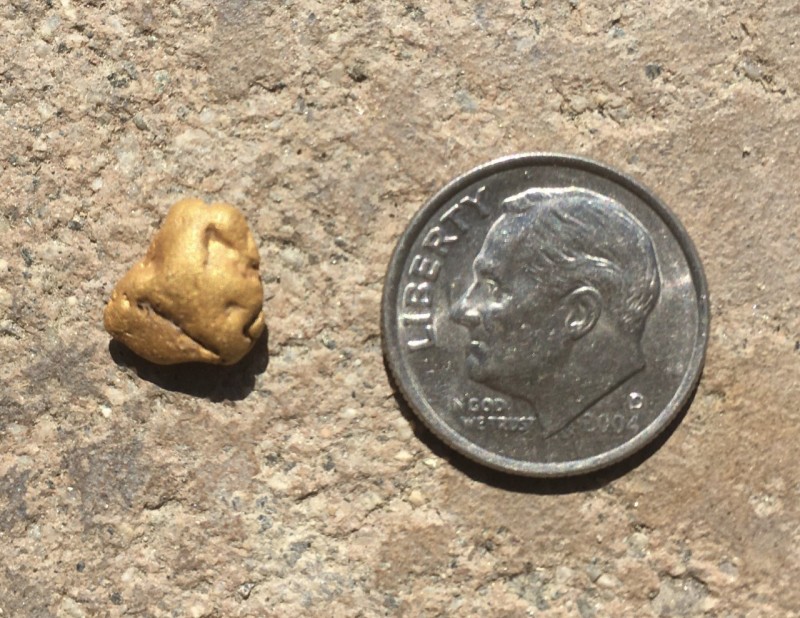-
Posts
316 -
Joined
-
Last visited
-
Days Won
4
Content Type
Forums
Detector Prospector Home
Detector Database
Downloads
Posts posted by Randy Lunn
-
-
My real frustration with limited pinpointer range is not finding the gold but finding the 25 small fragments of lead and birdshot that I dig before getting a small nugget.
-
Great detecting!
-
GotAU?, I was using the standard GPZ 14” coil.
-
This past weekend I participated in my first outing with the Southwestern Prospectors & Miners Association (SPMA) club. We met at a gas station off I-8 and headed to one of their large claims in the Cargo Muchacho Mountains west of Yuma on the California side of the Colorado River. It took just under an hour on desert dirt roads to get there but the drive was not bad. There were six other guys and we all bonded well. After discussing the area we split up with half trying their hand at dry washing and the other half metal detecting. I suited up with my GPZ and tool belt and headed out. The rugged terrain with 104 degree temperatures was challenging but felt great. I have not been able to get out much this year. I got lucky. On a moderate slope about four inches down in a crevice of schist I found a 2.1 gram nugget. Yahoo! My best and one of my few nuggets for the year.
The history of the area is interesting (from westernmininghistory.com):
“Mining was first done in this region by Spaniards as early as 1780-81, when placers in Jackson Gulch and oxidized ores in Madre Valley were worked. This is believed to have been the first gold mined in California. Later, mining was resumed under Mexican rule. The district received its name of Cargo Muchacho, or Loaded Boy, when two young Mexican boys came into camp one evening with their shirts loaded with gold. American miners became interested in this district soon after the end of the Mexican War in 1848. Mining became firmly established in 1877 with the completion of the Southern Pacific Railroad to Yuma. Large-scale mining continued from around 1890 until 1916 and again from 1932 until 1941, with intermittent activity since World War II.”
Happy Hunting!
-
Kac, Yes you have an interesting stone for your garden. Iron is not uncommon in New England. Bog iron is common in many areas.
“Saugus Iron Works National Historic Site is a National Historic Site about 10 miles northeast of Downtown Boston in Saugus, Massachusetts. It is the site of the first integrated ironworks in North America, founded by John Winthrop the Younger and in operation between 1646 and approximately 1670.” J( Wikipedia)
-
If you breathe on it and it smells "earthy" and "musty" than it is limestone. But it looks volcanic.
-
Well done Rick. X marks the spot!
-
Come on Jeff, get out there! Gary is getting ahead of you.
-
Thanks Lunk, I visited Geoffrey Notkin's booth last fall at the Denver gem and mineral show. He has a nice collection of meteorites, and I got two small ones for my grandkids. I also got them Geffrey's book, How to Find Treasure from Space, The Expert Guide to Meteorite Hunting and Identification. They both now want to go meteorite detecting.
-
A Nox 800 with a more powerful battery and a faster microprocessor (i.e. deeper penetration, better discrimination, faster detection speed) would work for me
-
Hi Lanny,
I am just catching up on your stories, wonderful entertainment, and I am learning a lot.
Thank You,
Randy
-
Jaw dropping fantastic find.
-
Spectacular find Lunk! A great reminder to check old areas. I remember you taught me that many of the limonite crystals are old pyrite crystals that have lost their sulphur. I really appreciate how you share your knowledge. Happy Holidays!
-
Fantastic Lunk. Congratulations. Hard work and discipline pay off.
-
Just the best, Peg. All cylinders firing smoothly. Congrats on a great season.
-
Mitchel,
WTG, well done! Franconia is not an easy location to find meteorites. I remember the Meteorite Men show where they got skunked at Franconia. I hope to get out there at least once this winter.
-
Thank you Mitchel,
This is an amazing article. I had no idea how advanced state of the art prospecting had become or the size of the effort.
-
Jaw dropping beautiful! Congrats!
-
Rhodium is bright, shiny, beautiful and very rare. It has jewelry and industrial uses. Only in the last few years has it taken off in price. It did not become a monetary metal as it was not known as a separate metal in antiquity being mixed with the other platnum group metals. As a store of wealth rhodium is not a bad choice but gold still wins for historic reasons. Central bank, especially China and Russia, are again stock piling gold. The US dollar will eventually lose its unique reserve currency status and slowly have to share the honor with other currencies or be part of a basket of currencies as the World Bank has discussed.
-
My son and I collected mineral specimens in Cerro Gordo about 10 years ago in the mine dumps. Many of the abandon mines were still open and you could poke around the entrances. Many of the old mining buildings and structures were still in place slowly decaying. I can believe there is still a lot of ore to be found but the old-timers certainly got the easy stuff.
-
Mine lab will have a competitive response either with their own product or through one of the current coopetition companies (Coiltech, Nugget Finder). MineLab will also take action to protect their IP if needed.
-
There seems to be a lot going on inside the GB2 coil. Could this be part of its magic? I love that detector.
-
A few years ago I had a major software download problem issue with my GPZ. Phil Beck handled the situation quickly and efficiently with thoughtfulness and concern for the customer experience. He is a pro and a good guy.
-
Jim was an honorary member of our gold club, the Valley Prospectors of San Bernardino. It was always special when he attended meetings. He loved to share general knowledge and had great stories. A few years ago the club even named a claim after him. I wish I knew him better. His legacy lives through his pioneering books on nugget detecting.





Short But Sweet
in Detector Prospector Forum
Posted
Lunk, way to go!!! Totally awesome haul. It is amazing how the proper weather conditions and your skill can combine to yield such great results. You give encouragement to us all.